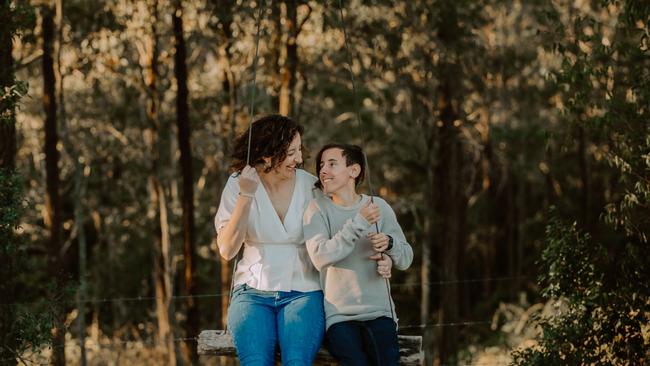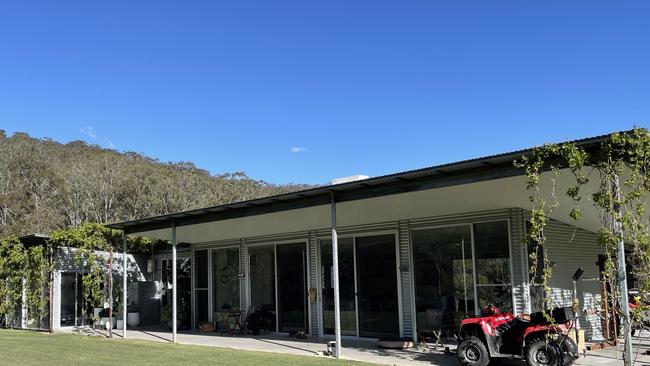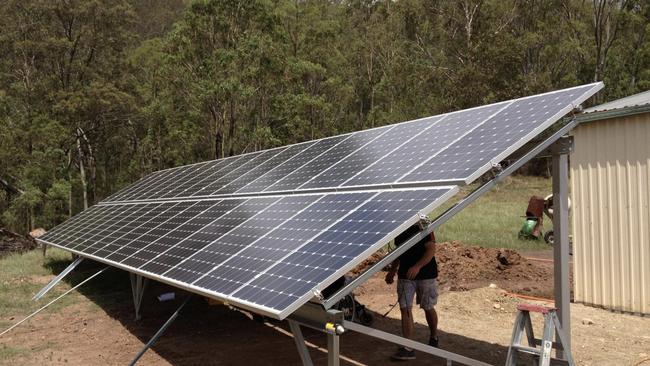How Aussie mum went off the grid and changed her life
An Aussie mum’s mental health battle led to her building an off-grid home in the country — and this is why she hasn’t looked back.

Lifestyle
Don't miss out on the headlines from Lifestyle. Followed categories will be added to My News.
To say that Naomi Rohr is a superwoman is no understatement. As the matriarch of a family with two children with special needs she has had it tougher than most.
Caden, her first son, was born prematurely at 29 weeks and as a result, was diagnosed with severe cerebral palsy. He relies on full-time care, nutritional supplementation through a feeding tube and wheelchair mobility. Her second son Eli was born at 25 weeks’ gestation and also has ongoing needs.
The demands on her time and mental strength was so acute that Naomi says even with the loving support of her husband Anthony, she could feel she was sliding into an anxious state. Their children were respectively three and one years old when she started taking medication for anxiety and panic attacks.
Her anxiety is a physical illness with nausea being a debilitating side effect. At the peak of her illness, she couldn’t eat. Weighing around 55kg at the time, she then lost another 10kg. Her condition meant that she couldn’t be around her kids for months as they’d trigger a panic attack. After six painful, challenging months, Naomi managed to claw her way back to semi normality.

In a moment of clarity, Naomi says she wanted out of Sydney. Anthony had grown up in Duns Creek, a rural residential suburb in the Hunter Region of NSW, and that’s where she wanted to reset their lives.
“We were visiting Anthony’s parents and looking for a place when we fell in love with a property, but we couldn’t afford to buy it,” says Naomi. “A couple of years later, it came up for sale again because there were some issues with it.”
Specifically, one issue pertained to boundary lines, which had to be addressed in council, but the bigger issue was in regards to power options to the site.

TAKING IT OFF-GRID
While connecting to the grid was possible via the neighbouring property, it was expensive and at that time the grid was quite unreliable with frequent black outs. “The power out here was so temperamental. It’s not something you have to think about when living in the city. We didn’t want to have to wake up day to day and not know if the power was coming on.”
Naomi says for environmental reasons, it was not their preferred choice either, and ultimately it was far too expensive.
“It would have cost us around $80,000 to get the power connected. It would have meant creating an easement and putting in a power pole,” she says.
“Not only was it not environmentally-friendly but it was also not cheap. The solar option was half the price at $40,000.”

The family has invested in a 6.5kW battery operated back-up generator. Usually, they can run off the battery for four days before needing to use the generator.
The roof on the north-facing home is pitched at an angle allowing the low sun to come through in winter warming the living area floor. In summer, no direct sun comes through that roof line keeping the house cool. All their water is harvested from the roof and stored in three concrete 20,000 litre tanks.
The passive solar in this house works really well. There is great cross ventilation too. We also have a fireplace but we use that more for ambience and we’d only ever use airconditioning in 40-degree plus days.”

While the house is fully accessible by wheelchair, Naomi says the brief was to build a family home that looks regular.
“We wanted it to be accessible but not look that part with obvious handrails and ramps.” Naomi’s boys are now 19 and 17 years of age respectively and she says the move to the country almost 10 years ago now has been life-changing – for everyone.
“Caden loves being outdoors, and so does Eli. We really love it here. I have had rough trots with severe anxiety and panic attacks, but I am a very much ‘doer’ so distracting my mind definitely helps.”
The culmination of her “busy mind” has been the creation of two successful business from her remote home. Hey Luna anxiety rings, to keep anxious hands busy while calming the mind, and Avarcas Australia, distributing the beautiful Spanish footwear brand locally.
Solar and home batteries have come a long way and the dream of never having to pay an electricity bill again has already become a reality for many savvy homeowners. Eco-building is a hot topic in architectural circles as more homeowners look at ways of converting energy from the sun into power.
Essentially, going off-grid means completely disconnecting your home from the national energy grid, and relying solely on the energy generated from your household solar and battery storage system.
To power a typical home, you’d need to install battery storage and back-up generators to ensure your home has enough power when the sun goes down.



